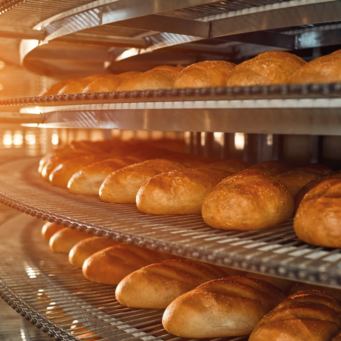
What is high oil pressure and how to solve it?
Oil pressure is determined by the resistance oil faces when flowing through the oil passages of the engine. Oil pressure is indicated by the oil pressure gauge and should show a steady value around 20 minutes after engine start-up, when the oil has reached its operating temperature. The unit of measurement is either PSI or Bar.
The ideal oil pressure varies depending on the car brand and model, but generally, the ideal oil pressure is between 25-65 PSI. To an extent, oil pressure is required for the oil to be able to reach all components of the engine, however if the oil pressure reading is outside of this range, it is usually considered too high or too low. Since the oil pressure depends on how much resistance the oil faces when flowing through the passages, factors like the size of the engine, the diameter of the bores, and the viscosity of the oil have an impact on oil pressure. A PSI over 80 is usually considered too high for the engine to properly be protected from damage. High oil pressure is an indicator that the oil is not able to properly pass through the bores and reach all parts of the engine effectively. An engine that is not lubricated correctly can face (sometimes instant) wear through friction, damage to its components, and in extreme cases, it can lead to engine failure.

What are the causes of high oil pressure?
Oil pressure sending unit malfunction: The oil pressure sending unit is responsible for measuring the oil pressure and controlling the oil pressure gauge on the dashboard. When the engine is cold, it is normal for the oil pressure to be higher. However, if the oil gauge reading is at its highest reading even after the engine has had time to warm up, the oil gauge may be defective. This can be diagnosed with a manual oil pressure tester, either at home or by a mechanic.
- Dirty or contaminated oil filter: The oil filter is there to filter out impurities from the engine oil. Over time, particles from dust, soot, rust, and gum get deposited in the filter and begin clogging the system. This leads to more resistance and higher oil pressure.
- Blocked passages: Once the oil has passed through the filter, it flows through a series of passages to the crankshaft. If these passages become blocked, the oil would not be able to pass through efficiently and effectively lubricate all parts of the engine. The resistance the oil faces in flowing through a partially or completely obstructed passage could be one reason for high oil pressure.
- Relief valve malfunction: The purpose of a relief valve is to provide a place for the oil to flow when the pressure gets too high. Usually, these valves are set up to open and allow oil through once the pressure reaches a certain level of PSI. If the relief valve experiences a malfunction, the oil pressure can quickly rise to a level that is not safe for the engine.
- Oil quality and viscosity: When oil is thicker (i.e: more viscous) it faces more resistance when passing through the engine's passages, leading to higher oil pressure. Changing the viscosity grade to a thicker or thinner oil has an effect on the oil pressure. If the oil is too viscous or not viscous enough, it might be the wrong oil for your engine. The temperature of the engine also has an effect on oil pressure. Since oil becomes thinner when it heats up, and thicker as it cools down, the oil pressure in the engine may be higher than normal during start-up. For this reason, it is recommended to wait 20 minutes after starting up the engine to gain an accurate PSI reading.




















